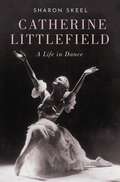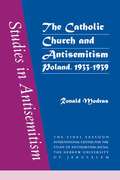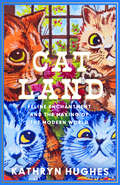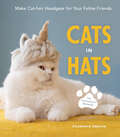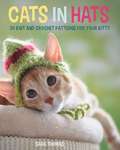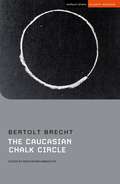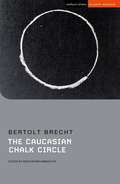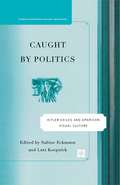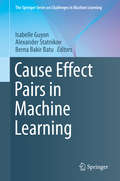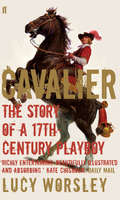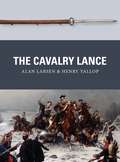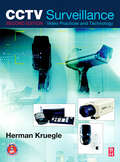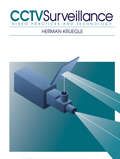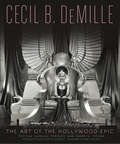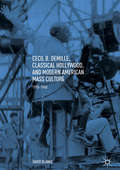- Table View
- List View
Catherine Littlefield: A Life in Dance
by Sharon SkeelWhile she is best remembered today as founder of the Philadelphia Ballet and the director and driving force behind the famous Littlefield School of Ballet, from which Balanchine drew the nucleus for his School of American Ballet, Catherine Littlefield (1905-51) and her oeuvre were in many ways emblematic of the full representation of dance throughout entertainments of the first half of the 20th century. From her early work as a teenager dancing for Florenz Ziegfeld to her later work in choreographing extravagant ice skating shows, a remarkable dance with 90 bicyclists for the 1940 World's Fair, and on television as resident choreographer for The Jimmy Durante Show, Littlefield was amongst the first choreographers to bring concert dance to broader venues, and her legacy lives on today in her enduring influence on generations of American ballet dancers. As the first biography of Littlefield, Catherine Littlefield: A Life in Dance traces her life in full from birth through childhood experiences dancing on the Academy of Music's grand stage, and from her foundation of the groundbreaking Philadelphia Ballet Company in 1935 to her later work in television and beyond. Littlefield counted among her many glamorous friends and colleagues writer Zelda Fitzgerald, conductor Leopold Stokowski, and composer Kurt Weill. This biography also provides an engrossing portrait of the remarkable Littlefield family, many of whom were instrumental to Catherine's success. With the unflagging support of her generous husband and indomitable mother, Littlefield gave shape to the course of American ballet in the 20th century long before Balanchine arrived in the United States.
The Catholic Church and Antisemitism
by Ronald ModrasInterwar Poland was home to more Jews than any other country in Europe. Its commonplace but simplistic identification with antisemitism was due largely to nationalist efforts to boycott Jewish business. That they failed was not for want of support by the Catholic clergy, for whom the ''Jewish question'' was more than economic. The myth of a Masonic-Jewish alliance to subvert Christian culture first flourished in France but held considerable sway over Catholics in 1930s Poland as elsewhere. This book examines how, following Vatican policy, Polish church leaders resisted separation of church and state in the name of Catholic culture. In that struggle, every assimilated Jew served as both a symbol and a potential agent of security. Antisemitism is no longer regarded as a legitimate political stance. But in Europe, the United States, and the Middle East, the issues of religious culture, national identity, and minorities are with us still. This study of interwar Poland will shed light on dilemmas that still effect us today.
The Catholic Church and Antisemitism
by Ronald ModrasInterwar Poland was home to more Jews than any other country in Europe. Its commonplace but simplistic identification with antisemitism was due largely to nationalist efforts to boycott Jewish business. That they failed was not for want of support by the Catholic clergy, for whom the ''Jewish question'' was more than economic. The myth of a Masonic-Jewish alliance to subvert Christian culture first flourished in France but held considerable sway over Catholics in 1930s Poland as elsewhere. This book examines how, following Vatican policy, Polish church leaders resisted separation of church and state in the name of Catholic culture. In that struggle, every assimilated Jew served as both a symbol and a potential agent of security. Antisemitism is no longer regarded as a legitimate political stance. But in Europe, the United States, and the Middle East, the issues of religious culture, national identity, and minorities are with us still. This study of interwar Poland will shed light on dilemmas that still effect us today.
Catholic Religious Poets: From Southwell to Crawshaw
by Anthony D. CousinsWhile so much has been written about the English Protestant religious poets of the late 16th and earlier 17th centuries, there is relatively little study on the Catholic religious poets. Cousins fills this gap with his critical history of the Catholic religious poets major phase in the English Renaissance. In studying the Catholic religious poets from Southwell to Crashaw, this book focuses on the interplay in their verse between natively English and Counter-Reformation devotional literary traditions. Cousins puts forward particularly two arguments: that most of the more important Catholic poets write verse which expresses a Christ-centred vision of reality; that the divine agape receives almost as much attention in the Catholic poets' verse as does devout eros. In The Catholic Religious Poets Cousins defends the work of the Catholic religious poets arguing that this literary tradition deserves closer examination and higher valuation than it has usually been given.
Catholics in the Movies
by Colleen McDannellCatholicism was all over movie screens in 2004. Mel Gibson's The Passion of the Christ was at the center of a media firestorm for months. A priest was a crucial character in the Academy Award-winning Million Dollar Baby. Everyone, it seemed, was talking about how religious stories should be represented, marketed, and received. Catholic characters, spaces, and rituals have been stock features in popular films since the silent era. An intensely visual religion with a well-defined ritual and authority system, Catholicism lends itself to the drama and pageantry of film. Moviegoers watch as Catholic visionaries interact with the supernatural, priests counsel their flocks, reformers fight for social justice, and bishops wield authoritarian power. Rather than being marginal to American popular culture, Catholic people, places, and rituals are all central to the world of the movie. Catholics in the Movies begins with an introductory essay that orients readers to the ways that films appear in culture and describes the broad trends that can be seen in the movies' hundred-year history of representing Catholics. Each chapter is written by a noted scholar of American religion who concentrates on one movie engaging important historical, artistic, and religious issues. Each then places the film within American cultural and social history, discusses the film as an expression of Catholic concerns of the period, and relates the film to others of its genre. Tracing the story of American Catholic history through popular films, Catholics in the Movies should be a valuable resource for anyone interested in American Catholicism and religion and film.
Cathy Come Home (BFI TV Classics)
by S. Lacey?Cathy Come Home is one of the most influential and highly-regarded UK television dramas. First screened in 1966, it was a devastating indictment of government policy towards homelessness, and a powerful defence of the homeless. More than forty years on, it is still cited as one of the most important television dramas of all time. Screened in the BBC's groundbreaking Wednesday Play anthology series, Cathy was the first single UK television play to be made on film and shot substantially on location. Directed by Ken Loach and produced by Tony Garnett, the film had an immediate impact, recording unprecedented audience approval ratings and generating controversy in the press. Its appearance coincided with the launch of the housing charity Shelter, which used an image of Carol White (the actress who played Cathy) as part of a poster campaign that helped the charity become a national campaigning body on behalf of the homeless. Cathy was also formally innovative. Based on the writer Jeremy Sandford's meticulous research, it combined a variety of documentary techniques in a dramatic context, and was one of the first in a long line of controversial 'documentary dramas' associated with the UK single play.Stephen Lacey provides the first book-length account of Cathy Come Home and offers a close textual reading, focusing on its main themes and storytelling techniques. He analyses the film and its production history, outlining how it came to the screen and placing it in its social and cultural context, and charts its media reception and how it became a national phenomenon. Lacey also explores how Cathy draws on a range of filmic and dramatic traditions, including the French New Wave and contemporary documentary and current affairs, and explores the anti-rhetorical style of 'non-acting' that has come to be associated with Loach's work.
Cathy Come Home (Open Forum Ser.)
by Jeremy SandfordSandford's 'Cathy Come Home' details the issue of homelessness and the life of a young woman in 1960s London as she moves from her own home, to council accomodation, and finally emergency accomodation for the homeless before being evicted and her children taken into care. It is a harrowing and emotive screenplay of the '60s television docu-drama which caused social upheaval upon its transmission and caused the homeless charity 'Shelter' to be formed. Although often distressing to read, I cannot recommend this book highly enough as it truly will change the way you look at the issue. Perhaps the most tragic thing of all is the preface to the re-printed edition which discusses how the issue of homelessness is now worse today than it was when Sandford decided to document it with this amazing play.
Catland: Feline Enchantment and the Making of the Modern World
by null Kathryn Hughes'Remarkable' Literary Review 'Startlingly original' Amanda Foreman Some called it a craze. To others it was a cult. Join prize-winning historian Kathryn Hughes to discover how Britain fell in love with cats and ushered in a new era. ‘He invented a whole cat world’ declared H. G. Wells of Louis Wain, the Edwardian artist whose anthropomorphic kittens made him a household name. His drawings were irresistible but Catland was more than the creation of one eccentric imagination. It was an attitude – a way of being in society while discreetly refusing to follow its rules. As cat capitalism boomed in the spectacular Edwardian age, prized animals changed hands for hundreds of pounds and a new industry sprung up to cater for their every need. Cats were no longer basement-dwelling pest-controllers, but stylish cultural subversives, more likely to flaunt a magnificent ruff and a pedigree from Persia. Wherever you found old conventions breaking down, there was a cat at the centre of the storm. Whether they were flying aeroplanes, sipping champagne or arguing about politics, Wain’s feline cast offered a sly take on the restless and risky culture of the post-Victorian world. No-one experienced these uncertainties more acutely than Wain himself, confined to a mental asylum while creating his most iconic work. Catland is a fascinating and fabulous unravelling of our obsession with cats, and the man dedicated to chronicling them. 'If a Louis Wain cat were reading this book, he would raise his topper in tribute’ The Times 'Brilliantly researched and unforgettable' Miranda Seymour 'Consistently fascinating … A tremendous literary feat in which we learn about Victorian sociology through the work of a remarkably unique artist' Kirkus, starred review
Cats in Hats
by Rojiman UmatanFinally, there’s a headwear solution for fashionable felines – and a practical use for accumulated shed hair. Cats in Hats contains step-by-step instructions for constructing stylish hats out of excess fur, so your cat will soon be the belle of the furball as they transform into a magical unicorn, ferocious lion or even a birthday cake!
Cats in Hats: 30 Knit and Crochet Hat Patterns for Your Kitty
by Sara ThomasDeck your cats out in hats that suit their many personalities! With The Punk Mohawk for edgier cats, The Unicorn for cats who are having identity issues, and The Cat in the Hat for any cat that loves great literature, there is a pattern in this book for every feline friend in your home. Complete with a breakdown of skill level and method of working (knit or crochet), suggestions for yarns, and written patterns and charts where necessary, you'll be able to whip up amazing headwear, whatever your cat's character. With the adorable color photos and helpful illustrations throughout, these hat patterns will be both exciting and easy to create. It's fun, it's addictive, and it's deliciously purr-fect from start to finish!
The Caucasian Chalk Circle (Student Editions)
by Bertolt BrechtBrecht projects an ancient Chinese story onto a realistic setting in Soviet Georgia. In a theme that echoes the Judgment of Solomon, two women argue over the possession of a child. Thanks to the unruly judge, Azdak (one of Brecht's most vivid creations) natural justice is done and the peasant Grusha keeps the child she loves, even though she is not its mother.Written while Brecht was in exile in the United States during the Second World War, The Caucasian Chalk Circle is a politically charged, much-revived and complex example of Brecht's epic theatre.This new Student Edition contains introductory commentary and notes by Kristopher Imbriggota from the University of Puget Sound, US, offering a much-needed contemporary perspective on the play. The introduction covers:- narrative structure: play about a play within a play ("circle")- songs and music- justice and social systems- context: Brecht, exile, WWII, socialism- notions of collective and class- fable and story adaptation, folk fairy tale
The Caucasian Chalk Circle (Student Editions)
by Bertolt BrechtBrecht projects an ancient Chinese story onto a realistic setting in Soviet Georgia. In a theme that echoes the Judgment of Solomon, two women argue over the possession of a child. Thanks to the unruly judge, Azdak (one of Brecht's most vivid creations) natural justice is done and the peasant Grusha keeps the child she loves, even though she is not its mother.Written while Brecht was in exile in the United States during the Second World War, The Caucasian Chalk Circle is a politically charged, much-revived and complex example of Brecht's epic theatre.This new Student Edition contains introductory commentary and notes by Kristopher Imbriggota from the University of Puget Sound, US, offering a much-needed contemporary perspective on the play. The introduction covers:- narrative structure: play about a play within a play ("circle")- songs and music- justice and social systems- context: Brecht, exile, WWII, socialism- notions of collective and class- fable and story adaptation, folk fairy tale
Caught By Politics: Hitler Exiles and American Visual Culture (Studies in European Culture and History)
This book explores German and European exile visual artists, designers and film practitioners in the United States such as Max Beckmann, George Grosz, Hans Richter, Peter Lorre, and Edgar Ulmer and examines how American artists including Walter Quirt, Jackson Pollock, and Robert Motherwell responded to the Europeanization of American culture.
Cause Effect Pairs in Machine Learning (The Springer Series on Challenges in Machine Learning)
by Isabelle Guyon Alexander Statnikov Berna Bakir BatuThis book presents ground-breaking advances in the domain of causal structure learning. The problem of distinguishing cause from effect (“Does altitude cause a change in atmospheric pressure, or vice versa?”) is here cast as a binary classification problem, to be tackled by machine learning algorithms. Based on the results of the ChaLearn Cause-Effect Pairs Challenge, this book reveals that the joint distribution of two variables can be scrutinized by machine learning algorithms to reveal the possible existence of a “causal mechanism”, in the sense that the values of one variable may have been generated from the values of the other. This book provides both tutorial material on the state-of-the-art on cause-effect pairs and exposes the reader to more advanced material, with a collection of selected papers. Supplemental material includes videos, slides, and code which can be found on the workshop website.Discovering causal relationships from observational data will become increasingly important in data science with the increasing amount of available data, as a means of detecting potential triggers in epidemiology, social sciences, economy, biology, medicine, and other sciences.
Cavalier: The Story Of A 17th Century Playboy
by Lucy WorsleyWilliam Cavendish, courageous, cultured and passionate about women, embodies the popular image of a cavalier. Famously defeated at the Battle of Marston Moor in 1644, he went into a long and miserable continental exile before returning to England in triumph on the restoration of King Charles II to the throne in 1660.Lucy Worsley brings to life a fascinating household of the 17th century, painting a picture of conspiracy, sexual intrigue, clandestine marriage and gossip. From Ben Jonson and Van Dyck to a savage, knife-wielding master-cook, Cavalier is a brilliant illumination of the stately home in England and all its many colourful inhabitants.
The Cavalry Lance (Weapon)
by Peter Dennis Alan Larsen Henry YallopThe development of cavalry firearms and the widespread disappearance of armour from the European battlefield saw a decline in the use of the cavalry lance in early modern warfare. However, by 1800 the lance, much changed from its medieval predecessors in both form and function, was back.During the next century the use of the lance spread to the armed forces of almost every Western country, seeing action in every major conflict from the Napoleonic Wars to World War I including the Crimean and Franco-Prussian wars and across the Atlantic in the American Civil War. The lance even reached the colonial conflicts of the Anglo-Sikh and Boer wars. It was not until the disappearance of the mounted warrior from the battlefield that the lance was consigned to history.Featuring specially commissioned artwork and drawing upon a variety of sources, this is the engaging story of the cavalry lance at war during the 19th and 20th centuries, from Waterloo to the Somme.
The Cavalry Lance (Weapon #59)
by Peter Dennis Alan Larsen Henry YallopThe development of cavalry firearms and the widespread disappearance of armour from the European battlefield saw a decline in the use of the cavalry lance in early modern warfare. However, by 1800 the lance, much changed from its medieval predecessors in both form and function, was back.During the next century the use of the lance spread to the armed forces of almost every Western country, seeing action in every major conflict from the Napoleonic Wars to World War I including the Crimean and Franco-Prussian wars and across the Atlantic in the American Civil War. The lance even reached the colonial conflicts of the Anglo-Sikh and Boer wars. It was not until the disappearance of the mounted warrior from the battlefield that the lance was consigned to history.Featuring specially commissioned artwork and drawing upon a variety of sources, this is the engaging story of the cavalry lance at war during the 19th and 20th centuries, from Waterloo to the Somme.
CCTV Surveillance: Video Practices and Technology
by Herman KruegleThis revision of the classic book on CCTV technology, CCTV Surveillance, provides a comprehensive examination of CCTV, covering the applications of various systems, how to design and install a system, and how to choose the right hardware. Taking into account the ever-changing advances in technology using digital techniques and the Internet, CCTV Surveillance, Second Edition, is completely updated with the recent advancements in digital cameras and digital recorders, remote monitoring via the Internet, and CCTV integration with other security systems. Continuing in the celebrated tradition of the first edition, the second edition is written to serve as a useful resource for the end-user as well as the technical practitioner. Each chapter begins with an overview, and presents the latest information on the relevant equipment, describing the characteristics, features and application of each device. Coverage of aging or obsolete technology is reduced to a historical perspective, and eight brand new chapters cover digital video technology, multiplexers, integrated camera-lens-housing, smart domes, and rapid deployment CCTV systems.Serves as an indispensable resource on CCTV theoryIncludes eight new chapters on the use of digital components and other related technologies that have seen a recent explosion in use Fully illustrated, the book contains completely updated photographs and diagrams that represent the latest in CCTV technology advancements
CCTV Surveillance: Video Practices and Technology
by Author UnknownA complete reference on CCTV technology Gives practical advice on the proper uses of CCTV to best protect against crime Contains more than 100 photos of the most modern equipment available.
CDM 2015: A Practical Guide for Architects and Designers
by Paul BusseyThis is the designer’s essential guide to implementing the new CDM 2015 regulations. It provides both a straightforward overview of the key changes and new duty holders, including the Principal Designer, as well as full colour diagrams and annotated plans which demonstrate how to apply the principles in the real world. As the regulations come into force it aims to reassure those fearing a change in their obligations by outlining easy to use practical tools which will integrate the philosophy of the new regulations – of proportionate response, creative solutions and collaborative working – into day-to-day practice. It’s designed as a concise and handy quick reference guide, easy to carry around on site or use at your desk, translating what can be dry and often impenetrable legislation into a set of simple, intuitive, design friendly and safe messages.
CDM 2015: A Practical Guide for Architects and Designers
by Paul BusseyThis is the designer’s essential guide to implementing the new CDM 2015 regulations. It provides both a straightforward overview of the key changes and new duty holders, including the Principal Designer, as well as full colour diagrams and annotated plans which demonstrate how to apply the principles in the real world. As the regulations come into force it aims to reassure those fearing a change in their obligations by outlining easy to use practical tools which will integrate the philosophy of the new regulations – of proportionate response, creative solutions and collaborative working – into day-to-day practice. It’s designed as a concise and handy quick reference guide, easy to carry around on site or use at your desk, translating what can be dry and often impenetrable legislation into a set of simple, intuitive, design friendly and safe messages.
CDOs in the Public Sector: Perspectives on Chief Digital Officers and Digital Transformation Strategies (SpringerBriefs in Applied Sciences and Technology)
by Christian SchachtnerThis book explores the need for innovative approaches to administrative digitization, leveraging technologies such as AI, blockchain, and smart processes to meet citizens' expectations, with a particular focus on the role of Chief Digital Officers (CDOs) in driving successful digital transformations within public institutions. Administrative digitization requires fresh inputs to match the leaps seen in the industry sector, utilizing technologies like AI-driven automation, blockchain transactions, and security tools. Smart process solutions are seen as transformative in upholding service standards aligned with citizens' state expectations. Unlike commercial companies, collaboration offers those overseeing public sector digitization enhanced scaling opportunities by drawing from experiences in other regions and metropolises, directly applicable and reusable. In the public realm, digital strategies mirror legal and social conditions, necessitating adjustments and adaptation options for Chief Digital Officers as they lead digital transformation. Methodological focal points in task structure redesign, process optimization, and motivating actors yield diverse action areas for the CDO's new role in public institutions. This book explores the instruments, strategies, and attitudes necessary to successfully implement transformative initiatives in organizations, emphasizing proven concepts with practical applicability, enabling readers to derive their own interaction options as digital guidance leaders. The book is a concise introduction to the specific requirements for visionary designers driving dynamic changes in user-centric public services.
Cecil B. DeMille: The Art of the Hollywood Epic
by Cecilia de Mille Presley Mark A. VieiraColossal. Stupendous. Epic. These adjectives, used by movie companies to hawk their wares, became clichés long ago. When used to describe the films of one director, they are accurate. More than any filmmaker in the history of the medium, Cecil B. DeMille mastered the art of the spectacle. In the process, he became a filmland founder. One hundred years ago, he made the first feature film ever shot in Hollywood and went on to become the most commercially successful producer-director in history.DeMille told his cinematic tales with painterly, extravagant images. The parting of the Red Sea in The Ten Commandments was only one of these. There were train wrecks (The Greatest Show on Earth); orgies (Manslaughter); battles (The Buccaneer); Ancient Rome (The Sign of the Cross); Ancient Egypt (Cleopatra); and the Holy Land (The Crusades). The best of these images are showcased here, in Cecil B. DeMille: The Art of the Hollywood Epic.This lavish volume opens the King Tut's tomb of cinematic treasures that is the Cecil B. DeMille Archives, presenting storyboard art, concept paintings, and an array of photographic imagery. Historian Mark A. Vieira writes an illuminating text to accompany these scenes. Cecilia de Mille Presley relates her grandfather's thoughts on his various films, and recalls her visits to his sets, including the Egyptian expedition to film The Ten Commandments.Like the director's works, Cecil B. DeMille: The Art of the Hollywood Epic is a panorama of magnificence-celebrating a legendary filmmaker and the remarkable history of Hollywood.
Cecil B. DeMille: The Art of the Hollywood Epic
by Cecilia de Mille Presley Mark A. VieiraColossal. Stupendous. Epic. These adjectives, used by movie companies to hawk their wares, became clichélong ago. When used to describe the films of one director, they are accurate. More than any filmmaker in the history of the medium, Cecil B. DeMille mastered the art of the spectacle. In the process, he became a filmland founder. One hundred years ago, he made the first feature film ever shot in Hollywood and went on to become the most commercially successful producer-director in history. DeMille told his cinematic tales with painterly, extravagant images. The parting of the Red Sea in The Ten Commandments was only one of these. There were train wrecks (The Greatest Show on Earth); orgies (Manslaughter); battles (The Buccaneer); Ancient Rome (The Sign of the Cross); Ancient Egypt (Cleopatra); and the Holy Land (The Crusades). The best of these images are showcased here, in Cecil B. DeMille: The Art of the Hollywood Epic. This lavish volume opens the King Tut's tomb of cinematic treasures that is the Cecil B. DeMille Archives, presenting storyboard art, concept paintings, and an array of photographic imagery. Historian Mark A. Vieira writes an illuminating text to accompany these scenes. Cecilia de Mille Presley relates her grandfather's thoughts on his various films, and recalls her visits to his sets, including the Egyptian expedition to film The Ten Commandments. Like the director's works, Cecil B. DeMille: The Art of the Hollywood Epic is a panorama of magnificence-celebrating a legendary filmmaker and the remarkable history of Hollywood.
Cecil B. DeMille, Classical Hollywood, and Modern American Mass Culture: 1910-1960
by David BlankeThis book uses the long and profitable career of Cecil B. DeMille to track the evolution of Classical Hollywood and its influence on emerging mass commercial culture in the US. DeMille’s success rested on how well his films presumed a broad consensus in the American public—expressed through consumer hedonism, faith, and an “exceptional” national history—which merged seamlessly with the efficient production methods developed by the largest integrated studios. DeMille’s sudden mid-career shift away from spectator perversity to corporate propagandist permanently tarnished the director’s historical standing among scholars, yet should not overshadow the profound links between his success and the rise and fall of mid-century mass culture.
